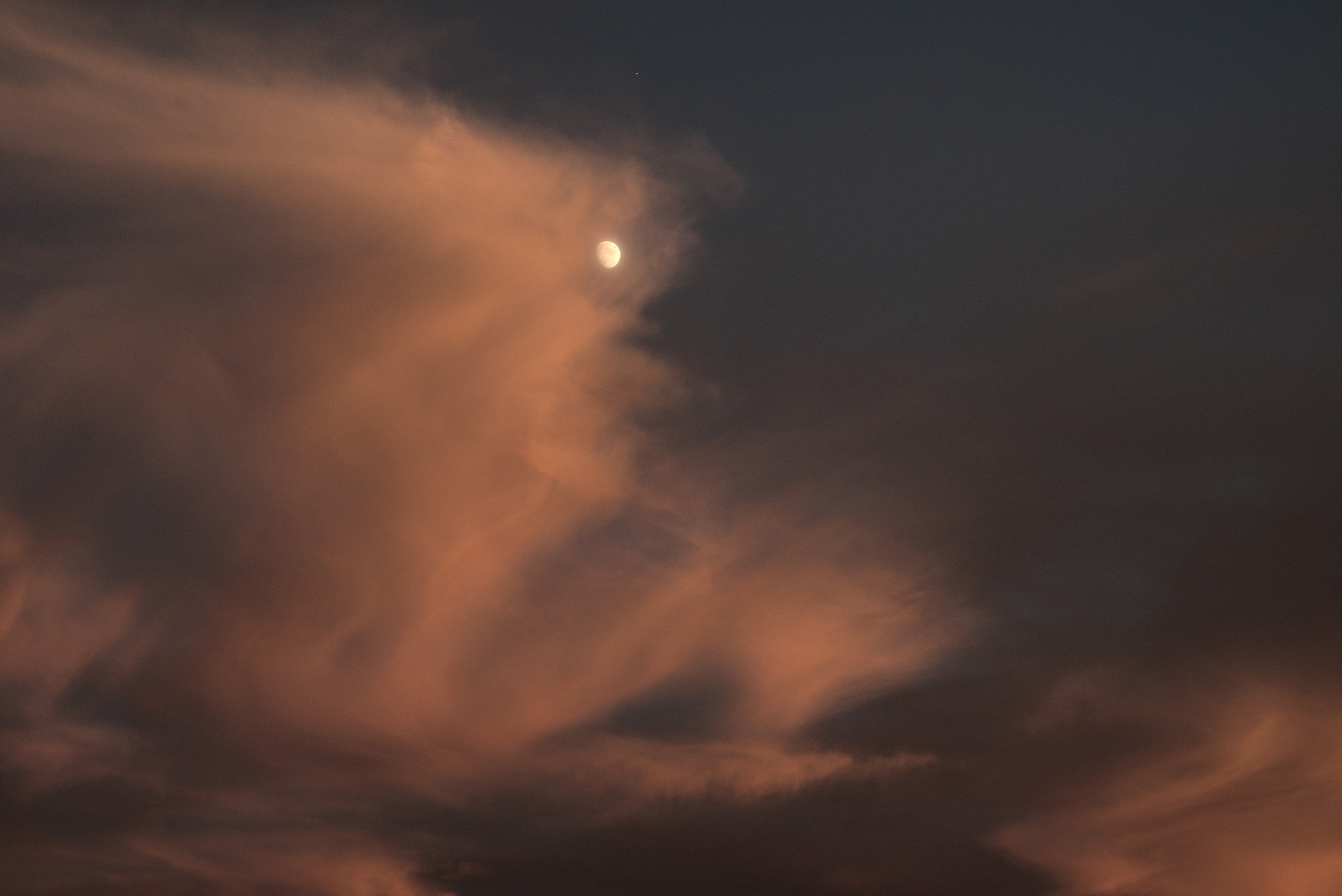Close, Moon
Robert Capa said, “If your photographs aren’t good enough, you’re not close enough.” But how do you get close to the moon? Join NASA or buy a bigger lens. I wouldn’t mind joining the space race, if I could find the right niche, and I have a big enough lens to photograph the moon in good detail. But, and it’s the darndest thing, close up, the moon always looks pretty much the same.
Photos of the moon taken terrestrially rely on composition and context to be effective, but also have surprising exposure challenges. How bright is the moon? If you point your camera straight at it, what should you set your camera exposure to? If you look up the answer, I bet you’ll be surprised.
[Exposure Value]((https://en.wikipedia.org/wiki/Exposure_value) is a scale of brightness, useful in determining camera exposure settings (f-stop and shutter speed) for different scenes and lighting conditions. The brighter the scene, the larger the EV, and 1 EV is one stop. Snow in full sun: EV 16; Christmas tree lights: EV 4; stars and the like are all negative values.
Scenes lit by the full moon are roughly EV -2. But if you look directly at the full moon? EV 15, nearly as bright as full daylight. Given that a single image might have a dynamic range of 6 EV. trying to capture a range of 17 EV means having both the moon and the moonlit scene requires special measures.
One solution is to photograph the moon in the sky with clouds that are still brightly lit, which is what I did above. I have zoomed in shots, but I like this wide shot better. Sorry, Mr. Capa. This is why I warn about photographic “rules”. They aren’t worthless, but they can be constricting. Sometimes, the most interesting photo is the one that steps outside the rules.
